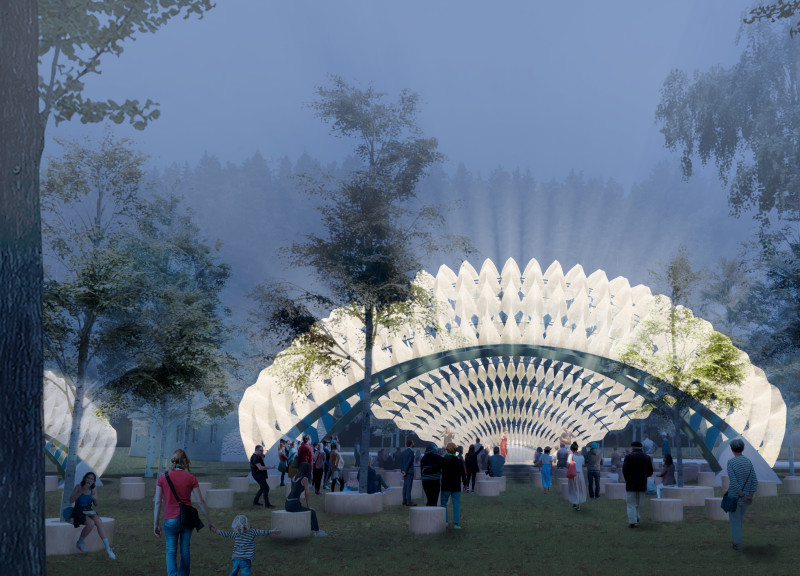5 key facts about this project
The installation showcases innovative design approaches, prominently featuring a structure that employs a "pinching" technique. This method allows for the creation of curvilinear forms that not only serve aesthetic purposes but also enhance sound quality within the space. The design emphasizes openness and the integration of the environment, encouraging visitors to engage with the installation and each other through music and conversation.
Unique Design Approaches
The "Pinched Forest Drums" distinguishes itself through its emphasis on acoustic properties derived from its architectural form. By utilizing various materials, including plywood and aluminum sheets, the project achieves both structural integrity and optimal sound transmission. The incorporation of lightweight materials facilitates spontaneous performances, making the installation more than just a static object; it is a space for dynamic interaction.
Attention to detail is evident in the project’s layout, which includes designated zones for music exploration and social activities. Seating areas are ergonomically integrated within the structure, allowing for comfortable engagement. The installation also incorporates drainage solutions, ensuring sustainability and ease of maintenance.
Acoustic Features and Environmental Integration
Sound plays a central role in the design philosophy of the "Pinched Forest Drums." The structure amplifies sound naturally, functioning similar to an instrument in its ability to resonate with the environment. This design outcome fosters an immersive experience where the audience can appreciate live music in an intimate setting while being surrounded by the forest.
The physical design aligns with principles of sustainability, using local materials and efficient construction techniques. The project showcases an environmentally conscious approach, encouraging visitors to appreciate the synergy between architecture and natural elements.
Overall, the "Pinched Forest Drums" serves as an exemplary model of how architecture can create spaces that promote artistic interaction, community engagement, and environmental awareness. For a comprehensive understanding of the project's nuances, including architectural plans, sections, and designs, readers are encouraged to explore the full details of the installation further.


























